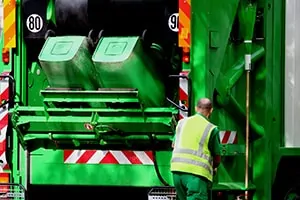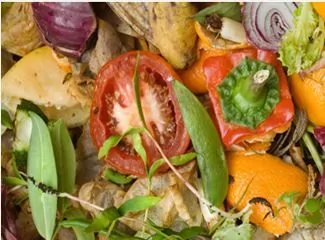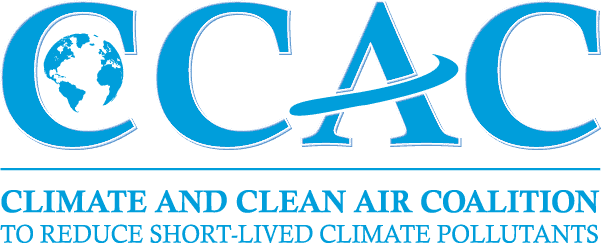

Stay informed. Explore a variety of topics and expand your knowledge of what’s happening in solid waste management. Today’s SCS blog covers Safety, Privatization, Anaerobic Digestion, Coal Combustion Residuals in MSWLFs, and the International Climate and Clean Air Coalition.
Click the article or presentation title to read more.

Is Privatization the Answer? You need to consider several factors before making the decision for solid waste services. The decision by a governmental agency to perform solid waste services or to outsource them (privatizing) is complex and should consider costs and the major factors discussed in this MSW Management article by Marc Rogoff, Karl Moyers, Michelle Leonard, and Robert Gardner.


Climate and Clean Air Coalition to Reduce Short-Lived Climate Pollutants (CCAC) SCS will participate in the CCAC’s initiative to mitigate Short-Lived Climate Pollutants (SLCPs) from the Municipal Solid Waste sector. Read more about this international coalition to get involved.
Municipal Solid Waste Landfills and Coal Combustion Residuals Municipal solid waste landfills can safely manage CCR from coal-burning electric utilities, and changing regulations may increase the market for off-site disposal of CCR. But landfills should accept CCR only after adjusting their procedures to reflect the special characteristics of CCR materials. What do you need to know? Find out in this article by Mike McLaughlin member of the ABA, SEER Waste and Resource Recovery Committee.
SCS Engineers is proud to announce its acceptance as an “Actor” in the Climate and Clean Air Coalition to Reduce Short-Lived Climate Pollutants (CCAC). SCS will participate in the CCAC’s initiative to mitigate Short-Lived Climate Pollutants (SLCPs) from the Municipal Solid Waste sector.
The CCAC is a voluntary international framework that encourages countries and organizations to take concrete steps to reduce SLCPs in order to protect the environment and public health, promote food and energy security, and address near-term climate change. The initial focus is on methane, black carbon, and many hydrofluorocarbons (HFCs). Fortunately, as their name indicates, SLCPs have a relatively short lifetime in the atmosphere, and therefore determined efforts to mitigate them now can significantly reduce their concentrations in a relatively short period of time. Many cost-effective technologies and practices have already been implemented in key sectors around the world and benefits are being seen.

The Coalition sponsors eleven initiatives designed to address urgent environmental challenges through collective and individual partners’ action. Some of the initiatives include: reducing black carbon emissions from heavy-duty diesel vehicles and engines; promoting HFC alternative technology and standards; addressing short-lived climate pollutants from agriculture; supporting national planning for action; financing mitigation of SLCPs; regional assessments; and urban health.
Founded in 2012, the CCAC is the first global effort to address the urgent challenge of SLCPs. The Coalition encourages all countries, regional economic integration organizations (REIO), intergovernmental organizations (IGOs), non-governmental organizations (NGOs), and private sector entities that are committed to solving this global and collective challenge to participate in its initiatives. To date, 48 countries, 14 IGOs, and 43 NGOs participate in the CCAC.

Upon receiving the letter of acceptance, SCS Vice President Dana Murray said, “We are pleased to be approved as an Actor and believe this initiative makes a difference in the human health and environment of the cities it assists because it looks at improving municipal solid waste management holistically at the local level.”
The Technical Bulletin is a synopsis of the NSPS rule supplement and the draft EG rule intended by the EPA to strengthen the previously published rule on July 17, 2014, and earlier proposals. The rules frame the requirements and responsibilities created for Municipal Solid Waste Landfills and the Waste and Recycling Industry.
The EPA has provided a 60-day time period from the publication date of August 27, 2015, for industry responses to the draft rules. Responding is critical to properly frame EPA’s rulemaking process; the EPA may add provisions to the final version of the rule based on information received during the comment period.
The Solid Waste Association of North America (SWANA) and the National Waste and Recycling Association (NW&RA) are reviewing the NSPS and EG rule in detail and will be commenting within the prescribed 60-day window.
This SCS Engineers Technical Bulletin, providing a more detailed summary of the rules, is available on the SCS website by clicking here. Share the link or this blog to help speed the efforts to gather information for the Waste and Recycling Industry response.
Contact Pat Sullivan, SCS Engineers, Senior Vice President to request additional information.
Pat Sullivan, REPA, CPP
National Expert – Landfill Clean Air Act; NSPS
SCS Engineers, Senior Vice President
(916) 361-1297
by Mike McLaughlin, P.E.

Coal combustion residuals (CCR) are one of the nation’s largest industrial waste streams, with more than 100 million tons produced annually. Roughly 40 percent of CCR produced is used beneficially, with the remainder disposed in landfills and surface impoundments.
Public and private waste management facilities will have new customers, as utilities that formerly operated their own disposal facilities seek reliable offsite disposal capacity. The cost of managing CCR is going up—EPA estimates the annual costs of its new CCR standards will be between $500 million and $750 million. Other estimates are as high as $2 billion.
However, before accepting CCR materials, MSWLFs should make sure they have modified procedures and otherwise accounted for the unique characteristics of CCR. CCR can have high sulfur content (on the order of 10,000 to 40,000 ppm), and under the right circumstances sulfur compounds can form hydrogen sulfide if CCR is mixed with MSW. To the extent high-sulfur wastes are disposed under conditions that can produce hydrogen sulfide, those conditions should either be controlled (or avoided), or appropriate precautions taken to manage the resulting hydrogen sulfide gas in gas collection and other systems.
There could be other reasons for segregating CCR. For example, placing CCR in a monofill areas might increase the potential for later beneficial use, especially if the materials can be kept dry. Moisture content is a critical factor affecting CCR use in pozzolanic cements, but not all ash materials are suitable for pozzolanic cement in any case. CCR also can affect structural stability of fill mass, operation of gas and leachate collection systems (e.g., through clogging with fines), and dust generation.
Read the entire Technical Bulletin by clicking here.